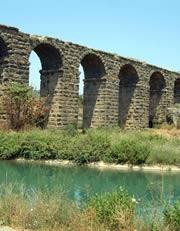What a riveting sounding title! But I'm a complete Romano-phile, so I'll cover anything on the topic. 
Also in preparation for the History board that I'll be creating soon.
Anyway, this article refers to how the Romans created holes and hurdles in their aquaducts to help reduce turbulence and keep a smooth flow of water.

 www.nature.com
www.nature.com
Also in preparation for the History board that I'll be creating soon.
Anyway, this article refers to how the Romans created holes and hurdles in their aquaducts to help reduce turbulence and keep a smooth flow of water.

Roman pipeline kept water flowing - Nature
Ancient aqueduct at Aspendos was a hydraulic masterpiece.
Last edited:

